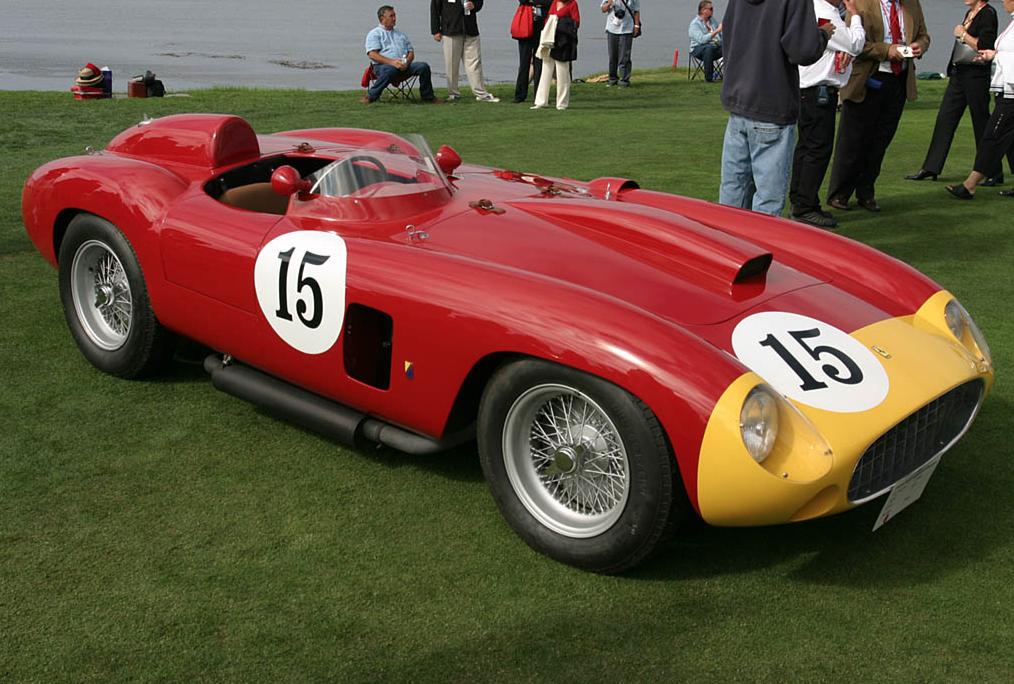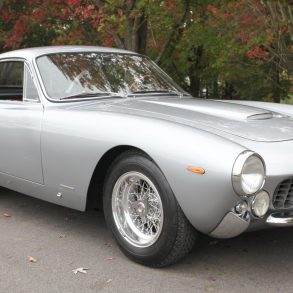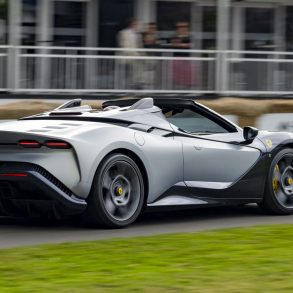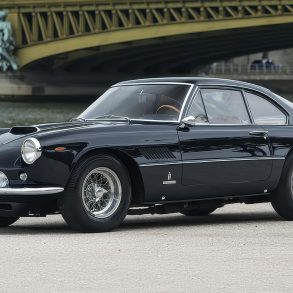Ferrari 290 MM – Car Profiles
Introduction
Designed for the 1956 Mille Miglia and as a replacement for the 860 Monza, the 290MM was mounted with a V12 engine with dual ignition and dry sump derived from the 4.5-litre Grand Prix. Even though this engine could be described as belonging to Lampredi school, its bore and stroke measurements were really more reminiscent of Colombo’s V12 than anything else. The car was an immediate success. In fact, Castellotti not only drove it home first in the Mille Miglia followed by two 860 Monzas piloted by Collins and Musso, but it also took fourth in the same race with Fangio at the wheel.
The Story
In 1956 the 290 MM made its debut in the Mille Miglia at the end of April, when the factory entered a pair of them in the event, backed up by a pair of 860 Monzas. The 290 MM sports racing car, with a 3.5 liter V-12 engine was a throwback to Ferrari’s roots compared to Ferrari’s current sports racing car output which was concentrated on four cylinder models, such as the 860 Monzas and the 500 Testa Rossa.
Aurelio Lampredi, the architect of many Ferrari four-cylinder engines left the company in late 1955 and was replaced by the legendary Vittorio Jano. V-12 once again became Ferrari’s power plant of choice for endurance competition as engineers Andrea Fraschetti and Vittorio Bellentani worked closely with Jano its design and development. The resulting 3490cc V-12 had four distributors, two plugs per cylinder and produced 320 horsepower at 7300 rpm.
Carrozzeria Scaglietti provided the body over the Ferrari 290 MM’s tubular frame which featured a “headrest” bump that became an iconic feature of Ferrari sports cars in the 50’s and 60’s. “Aerodynamics were an important consideration in designing the cars,” Scaglietti said. “The more aerodynamic a car was, the more beautiful it became. We understood that less air underneath made a car go faster.” Th car would help Ferrari win the Constructor’s Sports World Championship for the third time in four years.
Specifications
Engine
- TYPE: front, longitudinal 60° V12
- BORE/STROKE: 73 x 69.5mm
- UNITARY DISPLACEMENT: 290.88cc
- TOTAL DISPLACEMENT: 3490.61cc
- COMPRESSION RATIO: 9 : 1
- MAXIMUM POWER: 235 kW (320 hp) at 7200 rpm
- POWER PER LITRE: 92hp/l
- MAXIMUM TORQUE-:
- VALVE ACTUATION: single overhead camshaft per bank, two valves per cylinder
- FUEL FEED: three Weber 36 IR4/C1 carburetors
- IGNITION: twin spark plugs per cylinder, four coils
- LUBRICATION: dry sump
- CLUTCH: multi-plate
Chassis
- FRAME: tubular steel
- FRONT SUSPENSION: independent, unequal-length wishbones, coils springs, hydraulic shock absorbers
- REAR SUSPENSION: de Dion, twin radius arms, transverse leaf spring, hydraulic shock absorbers
- BRAKES: drums
- TRANSMISSION: 4-speed + reverse
- STEERING: worm and sector
- FUEL TANK: capacity 190litres
- FRONT TYRES: 6.00 x 16
- REAR TYRES: 7.00 x 16
Bodywork
- TYPE: two-seater spider
- LENGTH:
- WIDTH:
- HEIGHT:
- WHEELBASE: 2350mm
- FRONT TRACK: 1296mm
- REAR TRACK: 1310mm
- WEIGHT: 880kg (dry)
Performance
- TOP SPEED: 280km/h
- ACCELERATION 0-100 KM/H:
- 0-400 M:
- 0-1000 M:
Pictures



















